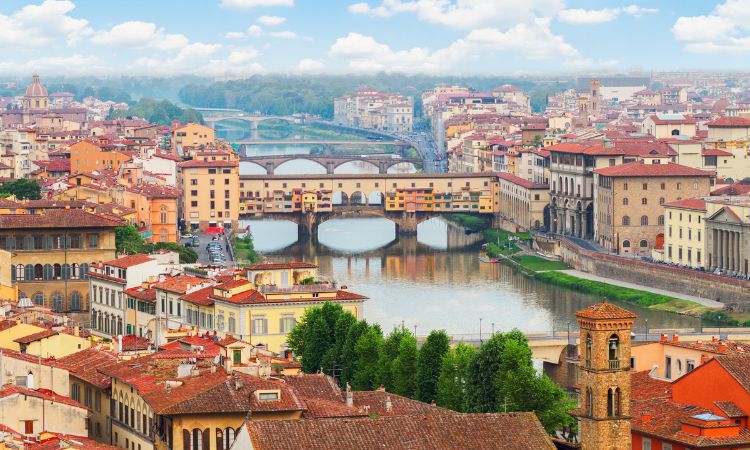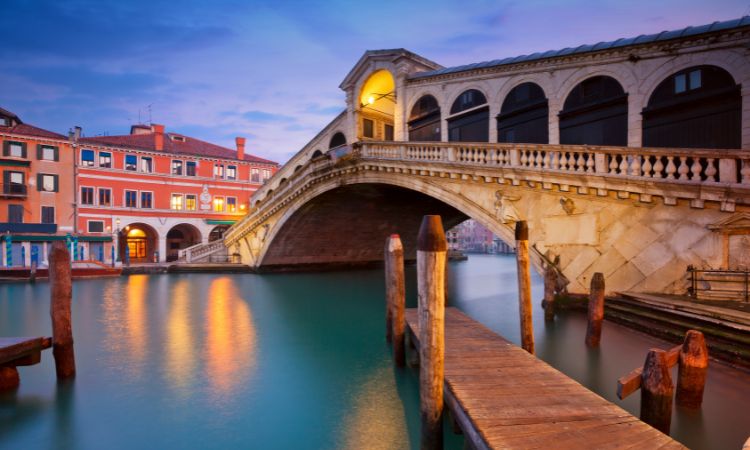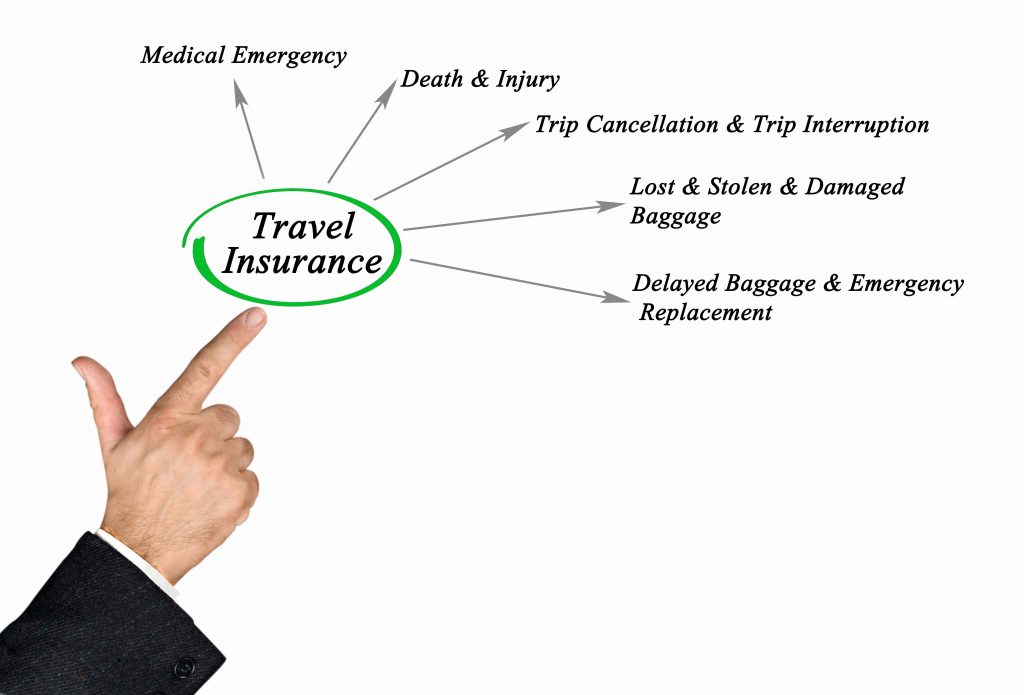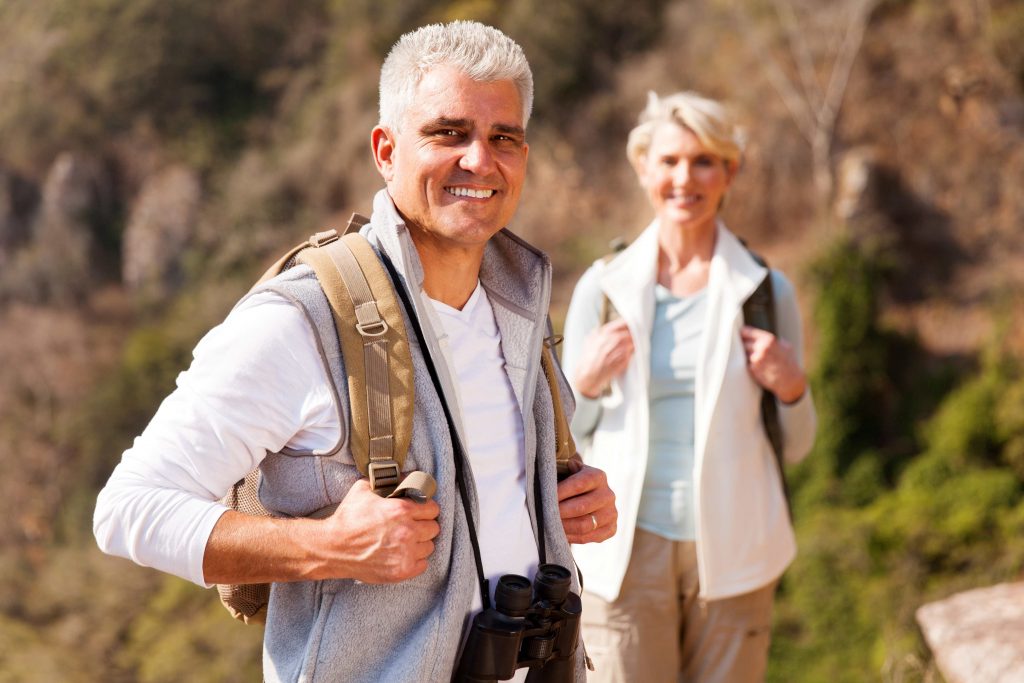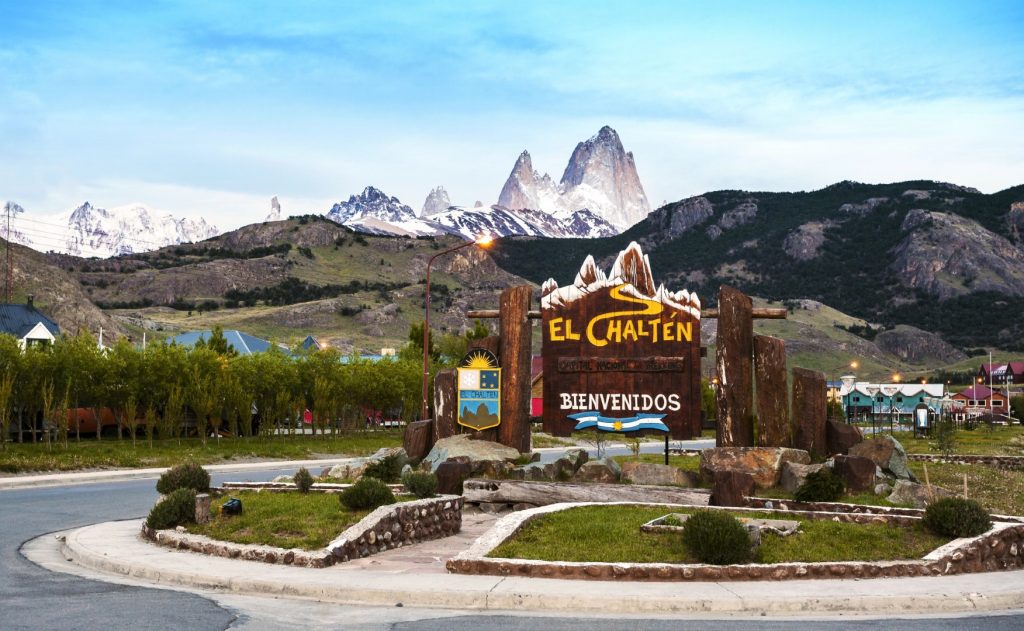
Nestled in the Patagonian region, El Chaltén is a haven for nature lovers, adventure enthusiasts, and anyone seeking tranquility amidst stunning landscapes. Known as the trekking capital of Argentina, El Chaltén is surrounded by majestic peaks, pristine lakes, and vast stretches of untouched wilderness. The iconic Mount Fitz Roy dominates the skyline and offers an awe-inspiring backdrop for outdoor adventures.
This unique destination, nestled within Los Glaciares National Park, is the epitome of “Off-the-Beaten” path with an estimated population of around 1500 people. From Buenos Aires, Argentina you’ll take a 3 hour flight to El Calafate, followed by a 2.5 hour drive to El Chalten.
The main street of El Chaltén is a charming and picturesque thoroughfare that serves as the heart of this small Patagonian village. Despite its modest size, it exudes a vibrant energy and laid-back atmosphere that perfectly reflects the spirit of the surrounding wilderness.
Lined with cozy cafes, rustic restaurants, and colorful shops, the main street invites visitors to wander leisurely and soak in the local culture. It serves as a nexus of activity and a gathering place for adventurers from all corners of the globe. Whether it’s sharing stories over a pint of local craft beer or simply taking in the breathtaking views, there’s a sense of camaraderie and exploration that infuses every corner of this vibrant village.
Where to eat a casual meal?
La Tapera

La Tapera in El Chaltén, Argentina, is a must-visit dining spot for several compelling reasons. Firstly, it offers a true taste of Argentina with a menu featuring classic dishes such including grilled meats, soups, salads, and homemade pastas. The use of locally sourced ingredients ensures freshness and authenticity in every bite.
The restaurant boasts a warm and inviting ambiance, perfect for relaxing after a day of trekking and exploring the stunning natural beauty of El Chaltén. The rustic décor and friendly staff contribute to a homely and welcoming experience. The chefs at La Tapera are skilled in bringing out the best in traditional Argentine recipes, making each meal a memorable culinary experience.
Additionally, La Tapera offers a selection of excellent local wines, allowing diners to enjoy a well-rounded Argentine dining experience. The staff is knowledgeable and can recommend the perfect wine pairing for your meal. Its reputation for delicious food and excellent service makes it a standout dining option.
Overall, eating at La Tapera provides a wonderful opportunity to indulge in delicious Argentine cuisine within a charming and comfortable setting, enhancing your visit to the beautiful region of El Chaltén.
Thirsty for a great beer after your hike?
La Cervecería Chaltén
Look no further than La Cervecería Chaltén. The brewery is renowned for its high-quality craft beers, which are brewed on-site using pristine Patagonian water and locally sourced ingredients. Each beer is crafted with care, resulting in a variety of unique and flavorful brews that cater to a range of palates.
The ambiance of La Cervecería Chaltén adds to the appeal, making it a perfect spot to unwind after a day of exploring the breathtaking landscapes of El Chaltén. The cozy interior, adorned with rustic wooden accents and warm lighting, creates a welcoming atmosphere where visitors can relax and enjoy their drinks. Additionally, the outdoor seating area provides stunning views of the surrounding mountains, allowing guests to immerse themselves in the natural beauty of Patagonia while savoring their beer.
Whether you’re winding down after a hike, meeting up with friends, or simply looking to enjoy a quality beer in a beautiful setting, La Cervecería Chaltén provides an unforgettable experience that celebrates the best of Patagonian craft brewing.
Looking for a great hike near El Chaltén?
Laguna de los Tres
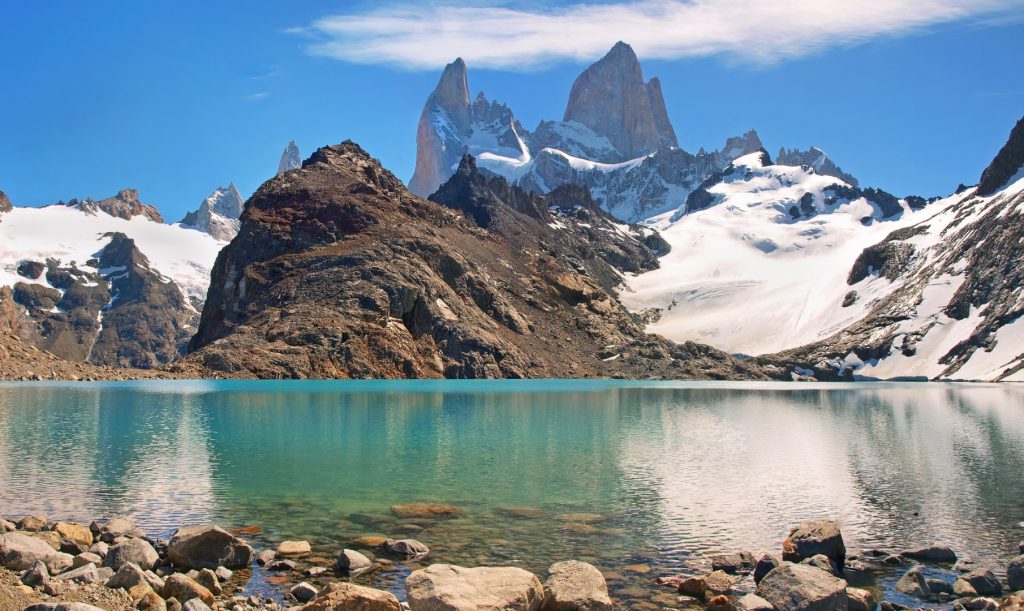
One of the best hikes near El Chaltén is the trail to Laguna de los Tres. This iconic hike offers breathtaking views and a rewarding challenge, making it a must-do for anyone visiting the region. The hike begins just outside El Chaltén and takes you through some of the most stunning landscapes in Patagonia.
The trail to Laguna de los Tres is approximately 20 kilometers (12.4 miles) round trip and typically takes around 8 to 10 hours to complete, depending on your pace and the amount of time you spend at the viewpoints. The path is well-marked and varies in difficulty, with moderate sections interspersed with more strenuous climbs.
Starting from El Chaltén, the trail winds through a beautiful lenga forest, offering shade and a chance to spot local wildlife. As you ascend, you’ll cross streams and pass through open meadows, with the majestic peaks of the Fitz Roy massif coming into view. The scenery is awe-inspiring, with towering granite spires and glacial valleys creating a dramatic backdrop.
One of the highlights of the hike is the viewpoint at Laguna Capri, approximately halfway to Laguna de los Tres. This serene lake provides a stunning reflection of Mount Fitz Roy on calm days and is a perfect spot for a rest and a picnic. From here, the trail becomes steeper and more challenging as you approach the final ascent.
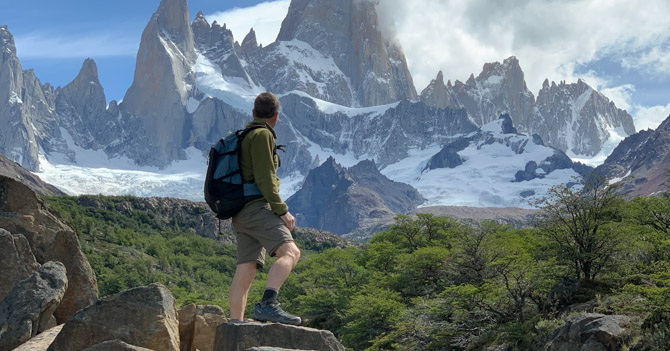
The last kilometer is the most demanding part of the hike, involving a steep climb over rocky terrain. However, the effort is well worth it. At the top, you are rewarded with panoramic views of Laguna de los Tres, a turquoise glacial lake nestled at the base of Mount Fitz Roy. The sight of the jagged peaks towering above the pristine waters is truly breathtaking and offers one of the most iconic views in Patagonia.
The hike to Laguna de los Tres is not only about reaching the stunning destination but also about enjoying the diverse and beautiful landscapes along the way. Whether you are an experienced hiker or an enthusiastic beginner, this trail provides an unforgettable experience and a chance to connect with the raw beauty of Argentine Patagonia.
Interested in watching a movie with a connection to El Chaltén?
“The Alpinist” (2021)
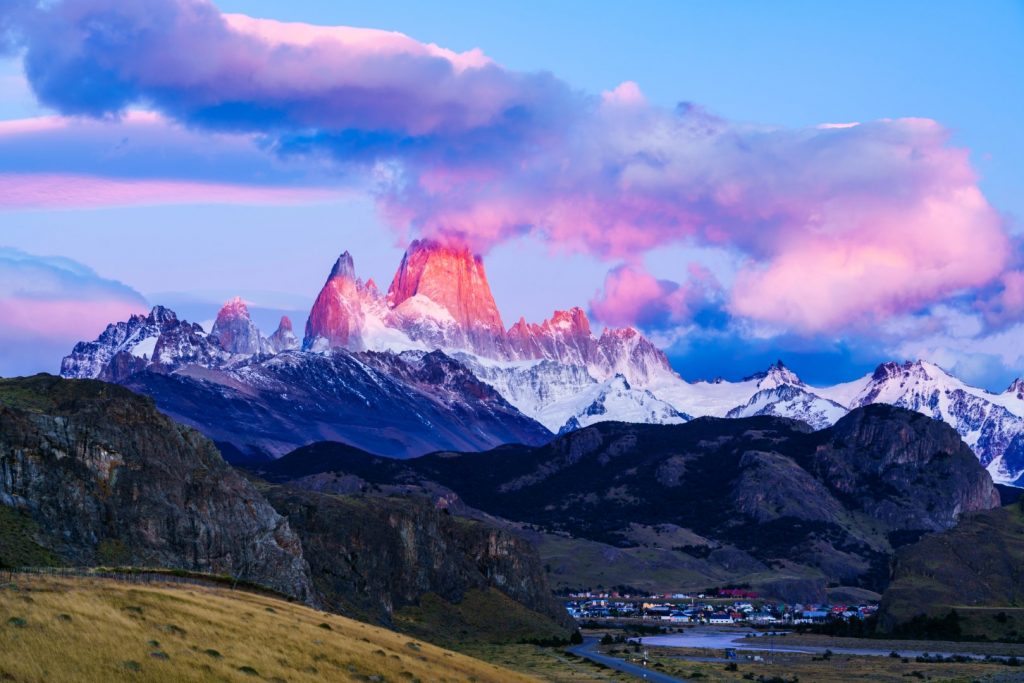
“The Alpinist” is a documentary film that explores the life and extraordinary climbing achievements of Marc-André Leclerc, a young Canadian alpinist known for his daring solo ascents of some of the world’s most challenging mountains. Directed by Peter Mortimer and Nick Rosen, the film provides an intimate look at Leclerc’s philosophy, his minimalist approach to climbing, and his remarkable feats in the mountains.
The film highlights Leclerc’s passion for alpinism and his commitment to pushing the boundaries of what is possible in the sport. It showcases his ascents in various locations, including Patagonia, where El Chaltén is situated. Patagonia, with its dramatic landscapes and formidable peaks, is a region that attracts some of the most skilled climbers in the world.
El Chaltén is surrounded by some of the most iconic and challenging climbing destinations, such as Mount Fitz Roy and Cerro Torre. These peaks are renowned in the climbing community for their technical difficulty, unpredictable weather, and stunning beauty.
Marc-André Leclerc’s connection to El Chaltén is significant because he completed solo ascents of some of these challenging peaks. His climbs in the area exemplify his exceptional skill, courage, and dedication to the purest form of alpinism—climbing alone, without ropes or support.
“The Alpinist” showcases Leclerc’s solo ascent of Torre Egger, one of the peaks in the Cerro Torre massif near El Chaltén. This achievement underscores the extreme risks and profound solitude associated with his climbing style. The film captures the essence of what makes El Chaltén and its surrounding peaks a mecca for climbers: the raw, untamed beauty of Patagonia and the allure of conquering some of the world’s most formidable mountains.
In summary, “The Alpinist” is not only a tribute to Marc-André Leclerc’s incredible talent and spirit but also a testament to the allure and challenge of the Patagonian peaks around El Chaltén. The film beautifully illustrates why this region holds a special place in the hearts of adventurers and climbers worldwide.
Looking Explore El Chaltén?
7-Day Trip – Hiking Patagonia – The Land at the End of the World
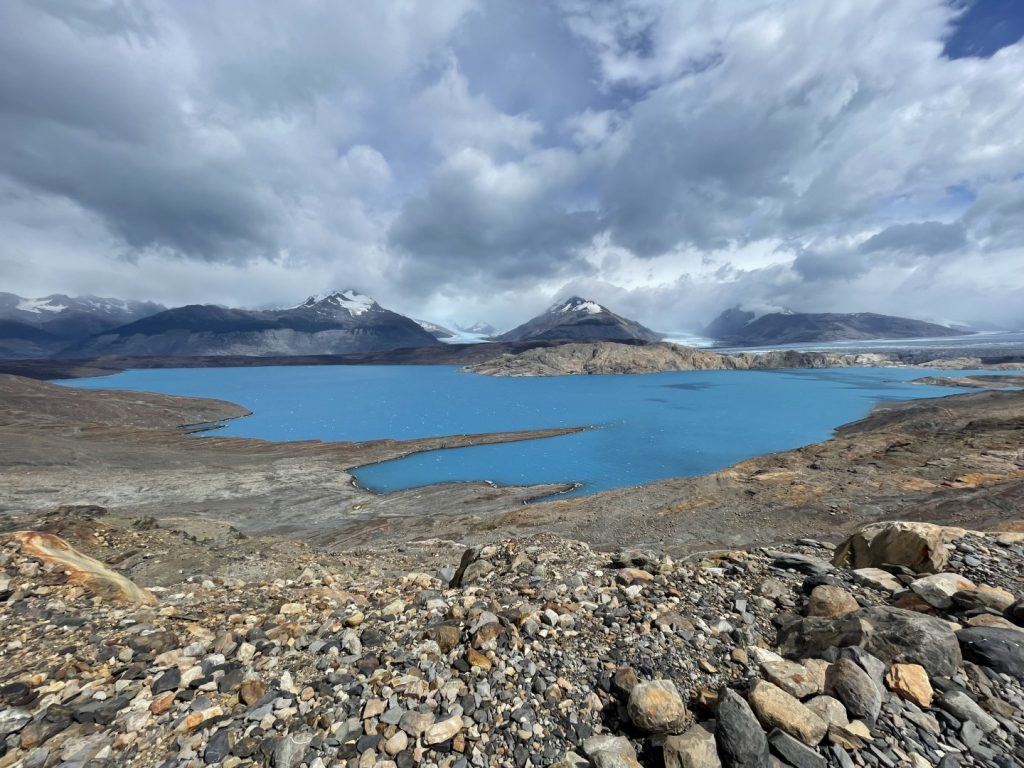
If you’re looking to explorer El Chaltén and Patagonia then join Go Get Lost as we explore one of the most magnificent natural areas on the planet, the mythical Patagonia region at the tip of South America. It’s on every hiker’s bucket list, over 400,000 square miles of sparsely populated wilderness between the Atlantic and Pacific oceans, with undulating steppes, forests, deserts, lakes, rivers, fjords, the Andes mountains and over 350 glaciers, many of which are still growing! We’ll base ourselves in Argentina, in two of the best towns for exploring the region. Each day will be filled with exciting adventures amid the trails and peaks of this vast and beautiful area…and each evening will be spent at a cozy and relaxing hotel, drinking in the local ambiance and dining on fine Argentinian cuisine.
You can find more information on our 7-Day tour of Patagonia here: https://www.gogetlost.com/hiking-patagonia/

